
Jump right in: Impact of April 2025 U.S. Tariffs on Products, Industries, and E-Commerce Sellers
Overview of the April 2025 Tariff Changes
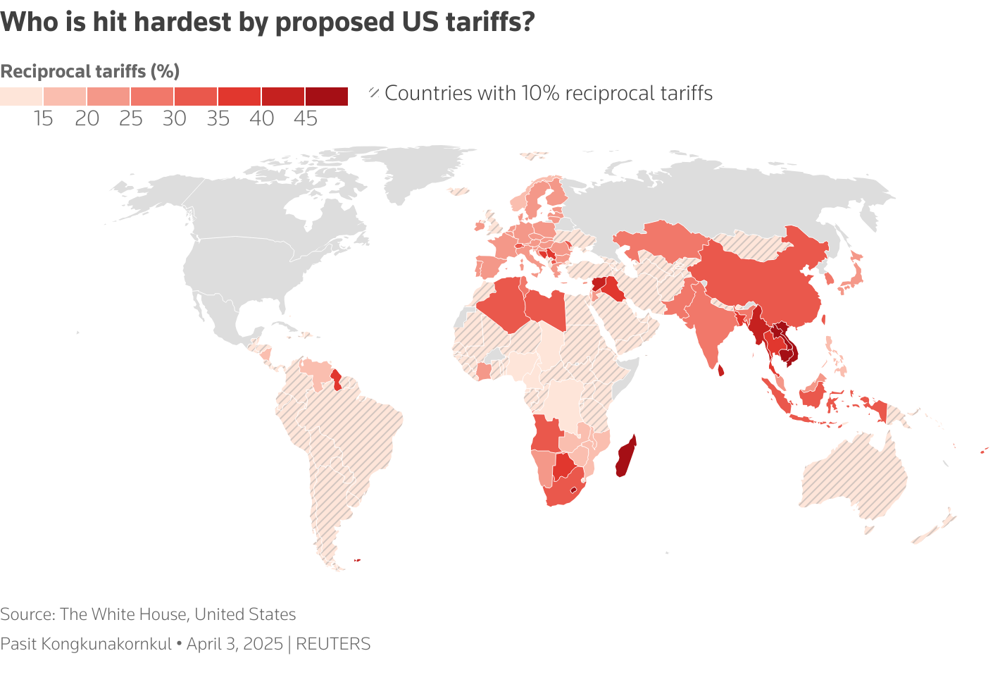
In early April 2025, the United States announced sweeping new tariffs on imports, marking one of the most significant trade policy shifts in decades. Under an executive order invoking a national emergency, a baseline 10% tariff on all imported goods was imposed, effective April 5, 2025. In addition, higher “reciprocal” tariff rates were assigned to countries that the U.S. administration deemed to have unfair trade practices or large trade surpluses with the U.S. This includes major U.S. trading partners in Asia and Europe, some of whom now face tariffs well above the baseline rate. These measures, introduced by President Donald Trump on April 2, 2025, are a new set of tariffs (not merely the continuation of previous duties) designed to pressure trading partners into more “reciprocal” trade arrangements.
Crucially, the new tariffs come on top of – and in some cases augment – existing tariffs from earlier trade actions. For example, imports from China were already subject to various U.S. duties (such as 20% tariffs imposed in February 2025) and longstanding tariffs from the earlier trade war. The April 2025 order layered an additional tariff on Chinese goods, bringing the effective rate on many Chinese imports to 54% . Similarly, tariffs on metals like steel (25%) and aluminum (10%) that have been in place since 2018 under Section 232 remain unchanged, and these sector-specific tariffs will not stack with the new reciprocal duties. In other words, goods already subject to Section 232 tariffs (steel, aluminum, and certain autos) continue under those rates and are largely exempted from the new 10% baseline tariff.
The policy also ended certain exemptions. Notably, the administration moved to eliminate the “de minimis” duty-free exemption for low-value packages from China, closing a loophole that had allowed many e-commerce parcels under $800 to enter the U.S. without tariffs. Starting May 2, 2025, small shipments from China (including Hong Kong) will no longer be duty-free; they will incur either standard tariffs or a special flat duty (e.g. 30% or $25 per package on postal shipments). This change directly targets China’s e-commerce supply chain as part of a strategy to combat illicit trade, but also has broad implications for online retailers and consumers.
In summary, the April 2025 U.S. tariffs represent a mix of new tariffs and expansions of existing ones:
- A new across-the-board 10% import tariff on virtually all goods from all countries (a broad new measure) reuters.com.
- Elevated tariff rates on specific countries (ranging roughly from 15% up to 49%) on top of the baseline, representing new tariffs against those economies (and, in China’s case, an expansion of earlier tariffs) reuters.com.
- Continuation of prior tariff programs (e.g. Section 232 metal tariffs; February 2025 emergency tariffs on Canada/Mexico over border security) which remain in effect alongside the new regime reuters.com.
- Closure of tariff exemptions such as the de minimis small-package exemption for China (an expansion of tariff applicability to items previously untaxed) whitehouse.gov.
Products and Industries Affected by New Tariffs
The new tariffs cast a wide net, affecting industries from consumer apparel and electronics to automotive and agriculture. Virtually all imported product categories will see higher import costs due to the baseline 10% duty, but certain sectors and source countries are hit much harder by the elevated rates. The table below summarizes key product categories/industry sectors impacted by the early April 2025 U.S. tariffs, including the tariff rate applied, the countries/regions targeted, and whether each tariff is newly introduced or an expansion of an existing tariff:
| Product Category / Industry | Tariff Rate & Details | Targeted Import Source | New or Expansion? |
| All Imported Goods (General) | 10% “baseline” tariff on virtually all imported products reuters.com. Effective April 5, 2025, this applies globally (unless a higher specific rate or exemption applies). | Worldwide (all countries) | New (broad tariff on all imports) |
| Chinese Goods (All sectors) | 34% reciprocal tariff on Chinese imports (on top of prior China-specific duties) reuters.com. Combined with an earlier 20% fentanyl-related tariff, many Chinese goods now face ~54% total duty reuters.com. This dramatically affects electronics, machinery, furniture, and other consumer goods sourced from China. | China (largest U.S. trade deficit) | Expansion of existing tariffs (new 34% added to pre-existing tariffs) |
| European Union Products |
20% tariff on imports from the EU reuters.com. Broadly impacts automobiles, luxury goods, foods and beverages (e.g. French wines, Italian liqueurs) exported from EU countries. (A threatened 200% tariff on European alcohol was not implemented, the rate remained at 20% reuters.com.) |
European Union (all 27 member states) | New (country-specific tariff above baseline) |
| Vietnam – Apparel/Textiles & More | 46% tariff on imports from Vietnam reuters.com. Vietnam, a major hub for apparel and footwear manufacturing, is heavily affected – U.S. import duties on apparel will roughly double on average (from ~14.5% to 30+%) due to this tariff reuters.com. Products from Vietnam such as clothing, shoes, and electronics are hit by this new high rate. | Vietnam (key sourcing hub for apparel/footwear) | New (high reciprocal tariff) |
| Cambodia – Apparel/Textiles |
49% tariff on imports from Cambodia reuters.com– among the highest rates. Cambodia’s garment and footwear industry exports to the U.S. (which previously enjoyed low duties) now face nearly 50% tariffs, drastically raising costs. |
Cambodia (garment manufacturing hub) | New (high reciprocal tariff) |
| Bangladesh – Apparel/Textiles | 37% tariff on imports from Bangladesh reuters.com. Bangladesh, another large apparel supplier, sees tariffs more than doubling on its clothing and textile exports to the U.S. (up from previous standard rates). | Bangladesh (major apparel exporter) | New (high reciprocal tariff) |
| Indonesia – Various Consumer Goods |
32% tariff on imports from Indonesia reuters.com. Affects footwear, apparel, electronics components, and other consumer goods sourced from Indonesian factories. |
Indonesia (diverse manufacturing base) | New (high reciprocal tariff) |
| Thailand – Electronics & Appliances |
36% tariff on imports from Thailand reuters.com. Hits Thai-made electronics, appliances, and auto parts. (Thailand’s rate was listed as ~36–37% in the U.S. order.) These are new tariffs on top of any existing duties. |
Thailand (electronics, auto-parts exporter) | New (high reciprocal tariff) |
| India – Various Goods |
26% tariff on imports from India reuters.com. Applies to India’s exports ranging from pharmaceuticals and chemicals to textiles and jewelry. This is a new tariff rate significantly above the 10% baseline. |
India (large emerging market) | New (high reciprocal tariff) |
| South Korea – Electronics & Autos | 25% tariff on imports from South Korea reuters.com. Impacts Korean-made electronics (phones, TVs), automobiles and parts, and other machinery. This is a newly imposed reciprocal tariff (Korea previously had lower U.S. tariff rates under trade agreements). | South Korea (tech and auto exporter) | New (high reciprocal tariff) |
| Japan – Autos & Machinery |
24% tariff on imports from Japan reuters.com. Targets Japanese automobiles, auto parts, electronics, and premium goods (e.g. whisky, electronics). This is a new tariff rate above prior levels (e.g. previously cars faced 2.5% in the U.S.) whitehouse.gov. |
Japan (major auto & electronics exporter) | New (high reciprocal tariff) |
| Taiwan – Tech Products | 32% tariff on imports from Taiwan reuters.com. Affects a range of tech products (semiconductors equipment, ICT products) and bicycles, machinery, etc., from Taiwan. Newly imposed in 2025. | Taiwan (electronics and machinery exporter) | New (high reciprocal tariff) |
| Other Countries (select examples) | Many other nations with significant U.S. trade surpluses were assigned elevated tariffs. For example: Sri Lanka (44%), Iraq (39%), Pakistan (30%), Algeria (30%), Guyana (38%), etc., all above the 10% base reuters.com reuters.com. Even some allies like Israel (17%) and Norway (16%) face higher rate reuters.com. These are all new tariffs aimed at a wide array of countries (the exact rate varying per the U.S. tariff formula). | Various (global – countries with “non-reciprocal” trade balances) | New (country-specific tariffs) |
| Mexico – General Imports | 25% tariff on most imports from Mexico (this was imposed earlier, in Feb 2025, under an emergency order tied to the opioid and border security crisis) reuters.com. As of April 2025, Mexican goods remain subject to this 25% duty rather than the new 10% baseline. However, imports that meet USMCA trade agreement rules of origin are exempt – a carve-out that was preserved to shield North American supply chains (especially important for automobiles) reuters.com. | Mexico (U.S. neighbor; autos, produce, etc.) | Existing tariff (Feb 2025) – continued (USMCA-compliant goods exempt) |
| Canada – General Imports |
25% tariff on most imports from Canada (also from Feb 2025 emergency action) reuters.com, plus an additional 10% tariff specifically on Canadian energy and potash exports reuters.com. These remain in effect. Like Mexico, Canada’s USMCA-compliant goods (e.g. vehicles with sufficient North American content) are exempt from the new tariffs, providing relief for integrated industries reuters.com. |
Canada (energy, auto parts, etc.) | Existing tariff (Feb 2025) – continued (USMCA-compliant goods exempt) |
| Automobiles & Auto Parts | 25% tariff on imported autos and parts (Section 232 national security tariff) – this was already in place on many vehicle imports by 2025 reuters.com. The new April 2025 regime does not add the 10% tariff on top of this for affected items reuters.com. In practice, this hits cars from Europe, Japan, Korea, etc. (North American-made cars are largely exempt via USMCA). | Global (autos) – e.g. EU, Japan, Korea (USMCA region mostly exempt) | Existing tariff (Section 232, pre-2025) – unchanged (exempt from new tariffs) |
| Steel & Aluminum (Metal imports) | 25% tariff on steel and 10% on aluminum imports (Section 232 tariffs in place since 2018) reuters.com. These remain unchanged and separate. The new 10% baseline tariff does not stack on top of these rates reuters.com. (Applies globally, though some allies had exemptions/quotas from the 2018 measures.) | Global (metals) – major steel/aluminum exporters | Existing tariffs (Section 232, since 2018) – unchanged |
| Beer and Malt Beverages | 25% tariff on all imported beer reuters.com. Announced as part of the April 2025 measures, this new duty targets beer imports specifically, affecting popular brands like Mexican Corona and Dutch Heineken reuters.com. It’s an additional product-specific tariff (ensuring beer is taxed at 25% even if originating from a country with a lower base rate or USMCA exemption). | Global (Mexico, EU, Canada – all foreign beer) | New (product-specific tariff on beer) |
| Aluminum Beer Cans (Packaging) | Aluminum cans for beverages have now been added to existing aluminum tariffs reuters.com. This closes a loophole, meaning imported empty cans or can stock for beer/soft drinks face the 10% aluminum duty (affecting beverage producers relying on imported cans). | Global (aluminum can materials) | Expansion of existing aluminum tariff (extends to cans) |
| Wine & Spirits (Alcoholic Drinks) | 20% tariff on European wines and spirits (as part of the EU’s 20% rate) is driving up costs of champagne, cognac, Scotch whisky, etc. reuters.com reuters.com. Tariffs also hit other alcohol: e.g. Italian liqueurs (Campari) in cocktails and stout beers (Guinness) reuters.com. A threatened 25% tariff on Mexican tequila and Canadian whisky was avoided (not implemented) reuters.com, but the overall drinks sector is still facing higher costs and potential job losses due to tariffs on inputs and finished beverages. | Europe (wine, spirits); Global beers; (tequila/whisky avoided for now) | New (as part of country tariffs; beer tariff new) |
| Consumer Electronics & Appliances | 10–34%+ tariffs on electronics and appliances. Many gadgets (phones, laptops, TVs, appliances) come from China (now ~54% tariffed) reuters.com, South Korea (25%), Thailand/Malaysia (30%±), etc. Even EU/Japan electronics face 10–20%. This raises prices across tech retail. (Note: Certain critical tech components like semiconductors are exempted from the new tariffs due to national security concerns reuters.com, but finished consumer products are largely affected.) | East Asia (China, Korea, Japan, Taiwan, Thailand, Malaysia); also EU | New tariffs (for most sources, or expansions in China’s case) |
| Apparel, Footwear & Textiles | 25–49% tariffs on apparel/footwear from Asia – a huge impact on fashion retailers. Countries that became alternatives to China now face steep rates (Vietnam 46%, Bangladesh 37%, Cambodia 49%, Indonesia 32%) reuters.com. Even imports from China (which many brands had already reduced) face ~54% total tariffs. The average U.S. import tariff on apparel will jump from 14.5% to ~30.6% reuters.com, doubling duty costs for clothing. This is entirely new tariffs, hitting an industry that relies heavily on low-cost overseas production. | South/Southeast Asia (Vietnam, Cambodia, Bangladesh, Indonesia, China, etc.) | New (high reciprocal tariffs on apparel-producing countries) |
| Agriculture & Food Imports | 10–20% tariffs on imported foods, produce, and specialty goods. European cheeses, wine, olive oil (EU 20%) and other foodstuffs will be pricier. Imports from countries at baseline face 10%. Seasonal produce from Mexico still faces the existing 25% (unless exempt via USMCA). Seafood imports from Asia (Vietnam, Thailand) carry the new high tariffs as well. These tariffs are new or higher than before (earlier trade agreements had reduced many food tariffs, now overridden by the new policy). | Europe (20%), Asia (varied rates), Latin America (10% or 25% for MX) | New (or continued 25% for Mexico produce) |
Sources: Official White House fact sheets and news reports (see citations in table).
For instance, the White House noted the tariffs would hit goods ranging “from premium Italian coffee and Japanese whisky to sportswear made in Asia” – showing that everything from food and drink to apparel is affected. Virtually no sector importing into the U.S. is untouched: tech gadgets, clothing, shoes, autos, machinery, raw materials, and consumer staples all face higher import costs due to these measures.
It’s worth noting that some critical products are exempt or handled separately. Imports tied to national security or essential supply chains – such as certain pharmaceuticals, medical supplies, semiconductors, rare earths, and energy products – are excluded from the new tariffs (either temporarily or as long as other tariff programs cover them). This means industries like pharma and semiconductor manufacturing are not immediately paying the extra 10% on those imports (though they could be subject to separate policies later). Nonetheless, the overall landscape for import-reliant industries is one of significantly higher costs.
Worried about rising import costs from the new tariffs?
eFulfillment Service can help you optimize your logistics and protect your margins. Get a Free U.S. Fulfillment Quote!
Practical Advice for E-Commerce Sellers
If you run an e-commerce business (for example, selling products online via your own website or marketplaces like Amazon, Shopify, etc.), these new tariffs may raise your costs and require adjustments to your operations. E-commerce sellers are particularly exposed if they import products or components for the goods they sell – especially if you source from China or other Asian manufacturing hubs that now carry very high tariffs. Below are practical tips and strategies to help mitigate risks, manage cost increases, and keep your customers informed:

1. Reevaluate Sourcing and Supply Chain Strategy
Diversify Your Suppliers and Origins:
Consider sourcing products from alternative countries that are less impacted by high tariffs. For instance, if you currently import from a country with a 40% tariff, look into suppliers in regions only facing the 10% base rate or with existing free trade benefits. However, keep in mind the baseline 10% applies to almost all countries, so focus on finding the lowest-tariff source rather than expecting zero tariffs. In some cases, shifting production to countries like Mexico or Canada could help qualify under USMCA rules (making goods tariff-free under the trade agreement) – but ensure the product meets the required origin criteria. Diversifying your supplier base can spread risk and reduce reliance on any one high-tariff country. For example, many apparel brands that moved from China to Vietnam are now considering other regions or even bringing some manufacturing onshore to mitigate tariff exposure.
Consider Nearshoring or Domestic Production:
With tariffs raising the cost of overseas imports, the cost gap between importing vs. producing domestically (or regionally) narrows. Investigate whether moving some production or assembly closer to the U.S. is feasible. Nearshoring – e.g. using manufacturers in Mexico, Canada, or Latin America – can reduce transit time and potentially avoid some tariffs (if goods qualify for trade agreement exemptions) channelengine.com channelengine.com. Domestic production might not be viable for all products (due to higher labor costs), but even partial assembly or final customization in the U.S. could lower the dutiable value of imports. Additionally, establishing relationships with suppliers in multiple regions gives flexibility if tariff policies change.
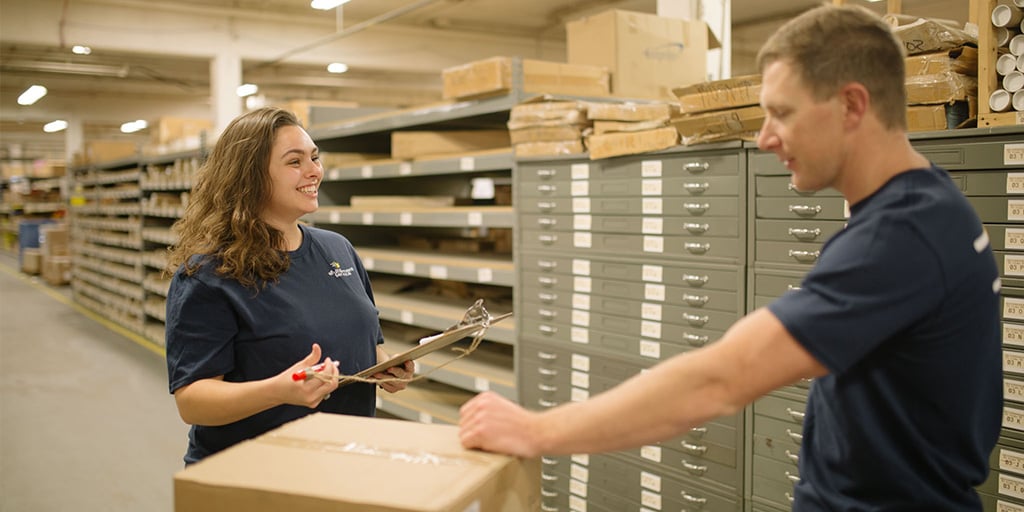
Consolidate Shipments & Use U.S. Warehousing:
If you currently drop-ship products directly from overseas to customers (common with China through de minimis), you will likely need to change tactics. With the de minimis $800 exemption for China ending, millions of small parcels will now incur duties. To avoid surprise costs and delays on individual customer shipments, consider bulk importing your goods into the U.S. and warehousing them domestically. Shipping larger orders via freight to your U.S. warehouse (or a 3PL fulfillment center) means you handle the customs clearance and tariffs upfront, rather than each customer’s package getting stuck at customs. Companies like Shein and Temu (major online marketplaces for cheap goods) are already setting up U.S. warehouses & fulfillment services and shifting away from direct China-to-consumer shipments to adapt to the new rules.
By having inventory stateside, you can ensure faster delivery to customers and more predictable costs. If you don’t have your own warehouse, you can use services like Amazon FBA or third-party logistics providers to store and ship your products—many e-commerce sellers are exploring U.S. based fulfillment services to offset the logistical challenges and costs of the tariffs.
Tariffs cutting into your profits?
Switching to a smarter U.S.-based 3PL like eFulfillment Service can reduce overhead and improve delivery times. Request Your Free Quote Now!
Leverage Bonded Warehouses or FTZs:
For importers with larger operations, using a Foreign Trade Zone (FTZ) or bonded warehouse might help defer or reduce duties. For example, you could bring products into an FTZ, perform kitting or assembly, and only pay tariffs when items leave the zone for U.S. distribution. If some inventory might be re-exported to other countries, an FTZ would allow you to avoid U.S. tariffs on those re-exports entirely. This is a more advanced strategy and requires compliance management, but it can be worthwhile if tariffs significantly erode your margins.

Stay Agile with Inventory:
Given the uncertainty (tariff rates could change with little notice or new exclusions might be announced), avoid over-committing to massive inventory solely from one country. It may be prudent to maintain some extra stock of critical items in the short term (to weather immediate cost surges or delays) while not going overboard on inventory that could become cheaper later if policies shift. It’s a delicate balance – use sales and inventory data to forecast needs carefully. Some sellers are taking a “wait and see” approach before making drastic supply chain moves, but having a Plan B in place is wise.
2. Mitigate Cost Increases and Protect Margins

Negotiate with Suppliers and Partners:
Don’t bear the cost alone if you can avoid it. Reach out to your suppliers to discuss the tariff impact – in some cases, you may negotiate lower base prices to share the burden of the new tariffs. Analysts note that companies are trying to “share the pain up and down the value chain” by renegotiating supplier contracts in light of tariffs. For example, if a tariff adds 25% to the cost, perhaps the supplier can absorb a portion by offering a discount, while you absorb some, and a portion might be passed to consumers. Similarly, talk to your freight forwarders and fulfillment partners about optimizing shipping methods or prices now that customs handling will increase (they might offer bulk rates or alternative routes).
Optimize Shipping and Logistics Costs:
With tariffs driving product costs up, it’s more important to save money in other areas like logistics. Consolidate freight, negotiate better shipping rates, and consider slower shipping modes for non-urgent goods to cut costs. Ensure you have all the proper documentation to clear customs efficiently (to avoid delays or extra fees). If you haven’t before, you may need to start working with a customs broker to handle the more complex import entries now that every package from certain countries requires formal entry and duty payment. Efficient customs clearance will be key – for instance, ensure correct tariff codes (HS codes) are used to avoid misclassification (which could lead to higher duties or penalties). Small errors can be costly under these new strict regimes.

Review Product Catalog & Pricing:
Analyze your product range and identify which items are most affected by tariffs. It may make sense to temporarily pause or reduce marketing of highly tariffed, low-margin items if they’ve become unprofitable or to focus on products with better margin cushion. Some e-commerce retailers might even discontinue certain products if tariffs make them unsustainably expensive.
For the remaining items, adjust pricing carefully (more on communicating this below). Consider offering product bundles or value-add services to justify higher prices. Additionally, if you sell on marketplaces, keep an eye on competitors – if everyone is facing the same tariffs, pricing norms may shift upward together. Use dynamic pricing tools if available to respond to cost changes while staying competitive.
Cost Absorption vs. Price Increases:
Decide how much of the tariff cost you can absorb and how much must be passed on to customers. This is a strategic decision: absorbing all costs will squeeze or eliminate profit, but passing all costs through could hurt demand. Many brands choose a balanced approach, accepting a hit to margins on some items while raising prices moderately.
Run the numbers on your profit margins: for example, a 10% baseline tariff might be manageable within your current margin, but a 30–40% tariff likely necessitates at least partial price increases. You might raise prices gradually rather than all at once, to test how consumers respond. Keep in mind that tariffs could be temporary or subject to change – if there’s a chance they could be rolled back, you might opt for a short-term margin hit to maintain customer loyalty, rather than pricing yourself out of the market.
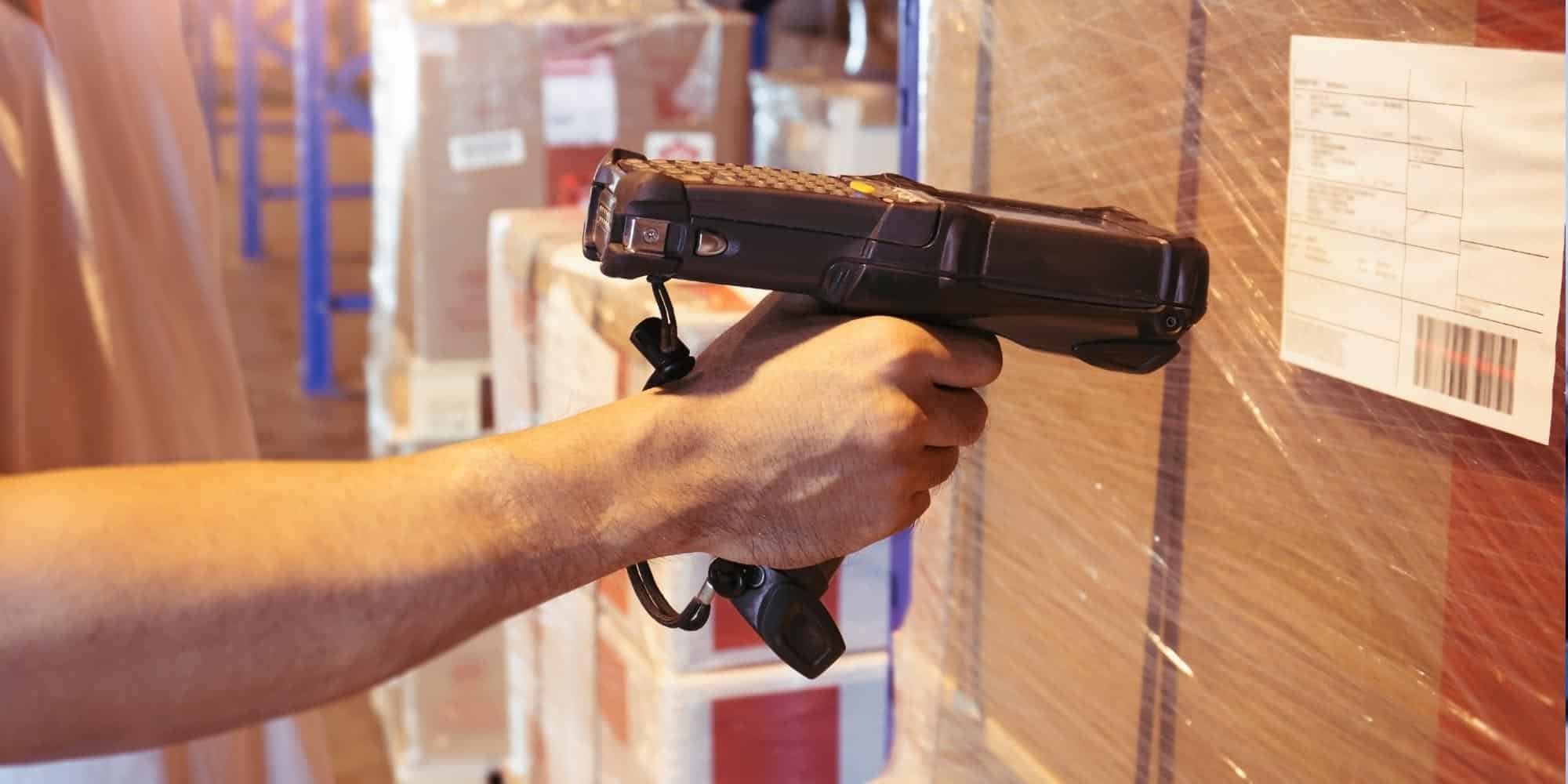
Improve Operational Efficiency:
To counter higher costs, find savings elsewhere in your business. Automate where possible, streamline your e-commerce operations, and reduce overhead. For instance, optimize digital advertising spend (every dollar saved in marketing could offset some lost margin from tariffs), or refine your packaging to reduce weight and shipping costs. Even small efficiency gains per order can add up when margins are tighter. Invest in inventory management systems and forecasting tools to avoid overstocking (tying up cash) or stockouts (missing sales) in this volatile period. The more precisely you manage your supply chain, the better you can control costs.
3. Adjust Your Market Strategies and Channels
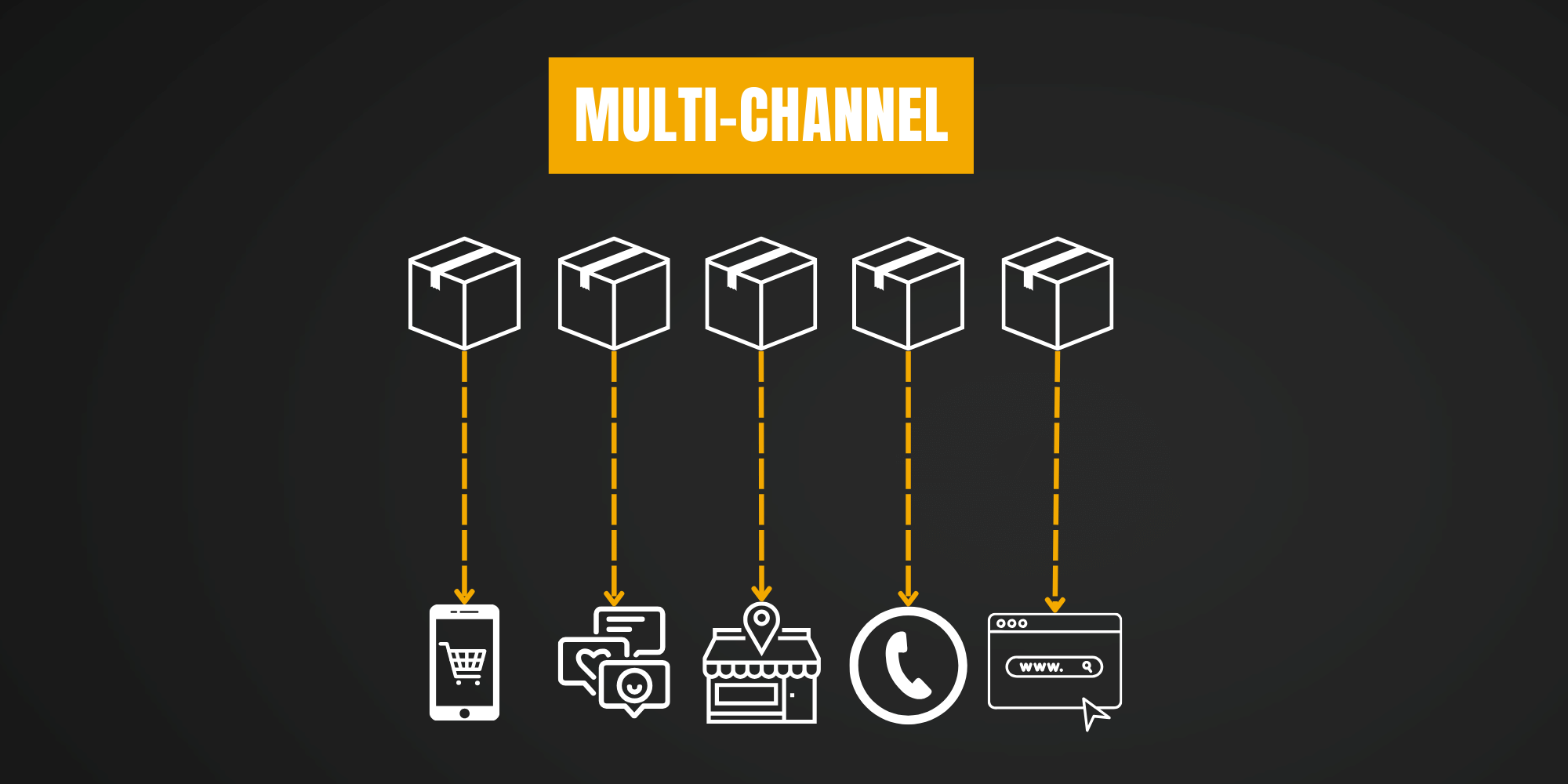
Explore Alternative Sales Channels:
If your current sales channel (e.g., a specific marketplace or platform) becomes less viable due to increased fees or competition, diversify your channels. The tariff situation might affect marketplaces differently – for example, if Amazon enforces certain policies for international sellers or changes fee structures due to tariffs, consider also selling on other marketplaces (eBay, Walmart, Etsy, regional platforms) or boosting your direct-to-consumer site. Diversifying sales channels can help spread risk: you might reach customers in other countries as well, which could be useful if you decide to re-route some inventory to non-U.S. markets with less tariffs. A multi-channel approach increases resilience in case any one channel’s costs or rules change unexpectedly.
Monitor Policy Updates and Use Tariff Resources:
The trade environment is dynamic. Stay informed through official updates from U.S. Trade Representative (USTR) and Customs and Border Protection (CBP). There may be exclusion processes or revisions to the tariffs – for example, certain niche products could get exemptions down the line. Participate in industry associations or online seller forums where information is shared. If an exclusion opportunity arises for your product category, be prepared to submit a request with data on how the tariff harms your business. Also, monitor whether trading partners retaliate, which could affect your sales if you also export. In short, treat tariff developments as a key business factor for 2025 and plan accordingly (perhaps designate someone on your team to track trade news weekly).
Leverage Technology and Data:
Use tools to simulate the impact of tariffs on your pricing and demand. Many e-commerce analytics platforms or ERP systems allow you to add cost variables – update them with the new tariff rates to see product-level profitability. This can inform which items to promote and which to phase out. Also consider using software for landed cost calculation to accurately display prices if you sell internationally (since other countries might retaliate with tariffs too). On the logistics side, invest in shipment tracking and visibility tools so you can anticipate any customs delays and keep customers informed in real time.
Tariff changes are here—are your fulfillment strategies ready?
Let eFulfillment Service help you adapt with flexible, cost-effective solutions. Start with a Free Quote Today.
4. Communicate Openly with Customers

Transparency on Price Changes:
If you do raise prices on your online store or marketplace listings, be transparent about why. Customers are often more understanding if they know a price hike is due to an external factor like government tariffs rather than pure greed. A brief note in the product description or a banner on your site can help: e.g. “Due to recent tariff increases on imported goods, our costs have risen. We’ve adjusted some prices to continue providing you with quality products. We appreciate your understanding.” This builds trust and shows you’re not arbitrarily gouging them. Some sellers choose to send an email newsletter explaining the situation and reassuring customers that quality and service will be maintained despite cost challenges.
Emphasize What You’re Doing to Mitigate Impact:
Reassure your customers that you are actively managing the situation. For example, communicate that you’re securing more local inventory, exploring new suppliers, or eating some of the cost to minimize price increases for them. If shipping times might be affected (say you switch from direct drop-shipping from China to a bulk import, causing a slight initial delay as you restock in the US), let customers know in advance about any potential shipping delays or temporary stock shortages. Setting the right expectations is key to maintaining satisfaction.

Highlight Product Value and U.S. Compliance:
Use this as an opportunity to double down on your product’s value proposition. If your prices have increased, remind customers of the quality, durability, or uniqueness of your goods. You might also stress that all tariffs and import formalities are handled by you, so customers won’t face surprise fees. (One fear customers have when ordering from overseas is getting a duty bill on delivery – make it clear that when buying from your store, that won’t happen, even under the new rules, because you’ve got it covered.) If you’ve moved production or sourcing to the U.S. or a tariff-free area, you can even marketing-wise highlight “Made in USA” or “USMCA-friendly” aspects, which can appeal to some consumers and justify the cost.
Customer Service and Flexibility:
Be prepared to offer strong customer service during this adjustment period. Some shoppers might notice price differences or longer shipping and will have questions – train your support team on how to explain the tariff situation in simple terms. You could offer limited-time promotions or loyalty discounts to loyal customers to cushion the blow (for example, a coupon that offsets the price increase on their next purchase). While you cannot avoid the tariffs, showing empathy and responsiveness goes a long way. Remember, your competitors are in the same boat with tariffs – differentiating on customer experience can help retain customers even if prices industry-wide go up.
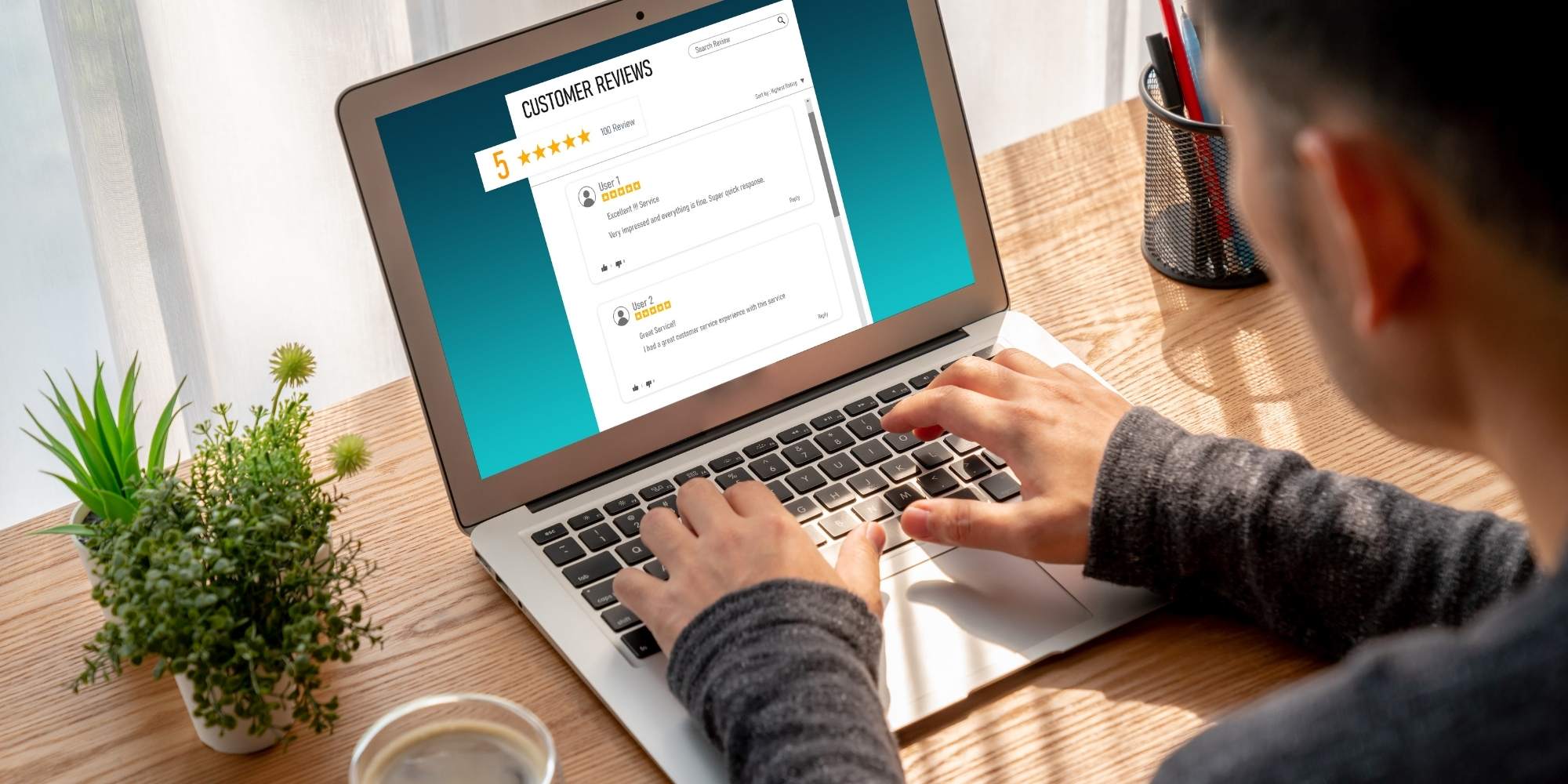
Monitor Customer Feedback:
Keep an eye on your reviews, social media, and return rates after implementing changes. If you see a lot of complaints about higher prices or other issues, consider reaching out to those customers with a personal explanation or small goodwill gesture. Use the feedback to adjust your strategies – for instance, if a particular product’s new price isn’t resonating, maybe you discontinue it or find a cheaper alternative. Staying engaged with your customer base will help you navigate this turbulent time without losing their loyalty.
Higher duties don’t have to mean higher stress.
eFulfillment Service offers U.S. warehousing and fulfillment that can help you manage costs and avoid delays. See Your Savings—Get a Free Quote.
5. Financial Planning and Risk Management
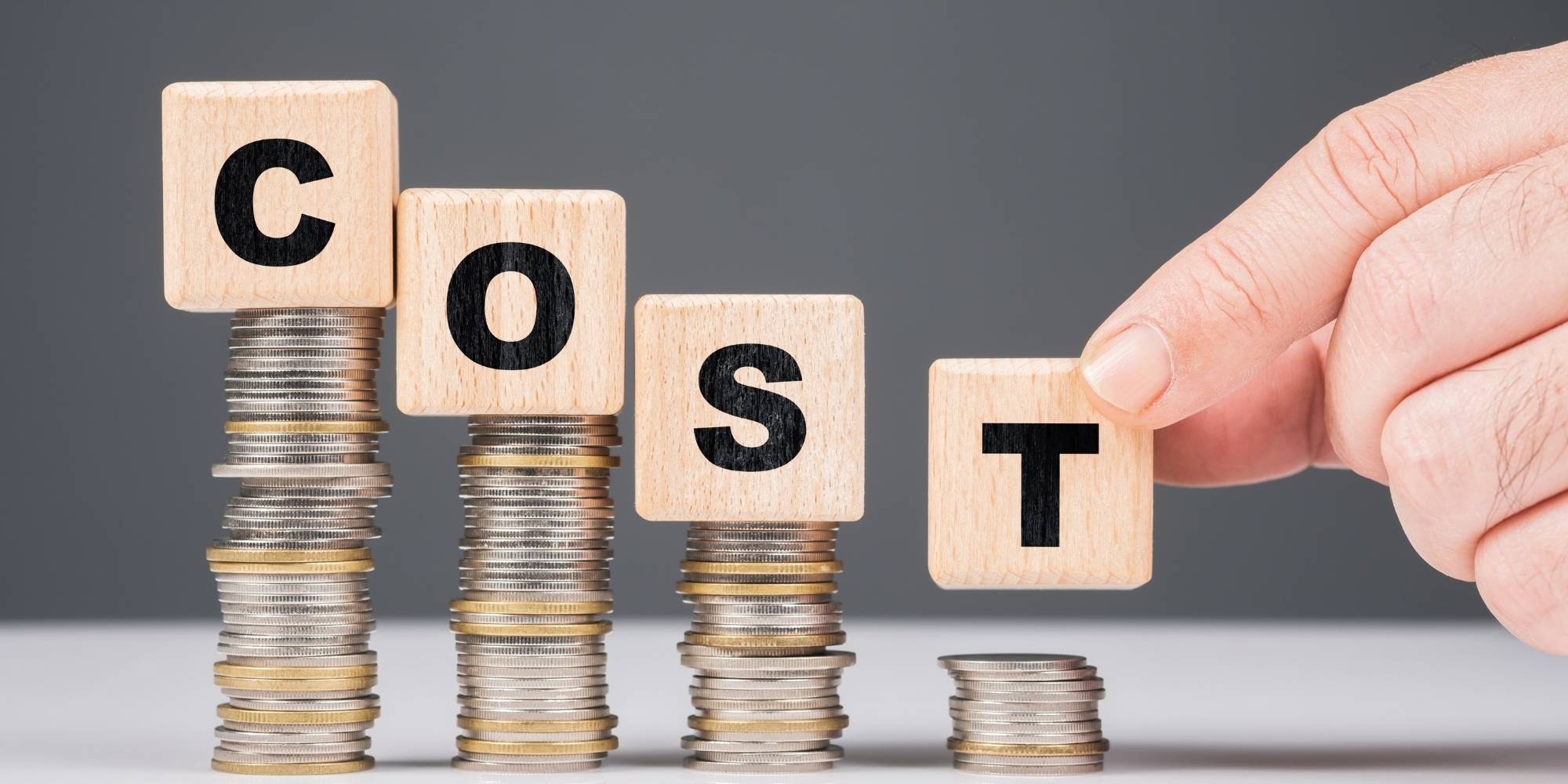
Budget for Tariffs:
Update your financial projections to account for the tariff costs. This may involve revising profit margins, cash flow forecasts, and funding needs. Make sure you have sufficient cash reserves or credit to pay the higher import duties (remember, tariffs are usually paid at the point of import, which could be weeks or months before you recoup that cost through sales). If you operate on thin margins, the added 10–40% in costs can strain your finances, so consider securing a line of credit or increasing your working capital cushion. It might be wise to slightly increase prices now to build a buffer, even if you still have some old inventory imported at the lower cost – this can help fund the next inventory cycle which will be hit by tariffs.
Insurance and Hedging:
While you can’t directly hedge tariffs easily, you can insure your shipments against delays or losses (since more complex customs could increase risk of issues). Also, keep an eye on currency exchange rates – sometimes, currency movements offset tariffs (e.g. the Chinese yuan might depreciate against the dollar, making Chinese goods a bit cheaper in dollar terms to partially offset the tariff). If you transact in foreign currency, consider locking in rates or hedging to avoid extra volatility on top of tariffs.

Collaborate and Seek Expert Advice:
Talk to freight forwarders, customs brokers, or consultants who specialize in trade compliance. They might suggest specific customs strategies like tariff reclassification (ensuring your goods are categorized under the correct code that might carry a lower rate if any ambiguity exists), or exploiting any lesser-known trade programs. Join webinars or workshops on tariff compliance – many trade organizations and commerce departments are hosting info sessions given the widespread impact of these tariffs. For example, trade groups in the apparel industry are actively discussing these tariffs as a “major shock” and looking for ways to adapt; similarly, electronics and retail associations are sharing best practices.
Keep Long-Term Perspective:
Finally, understand that trade policies can change with political shifts. These 2025 tariffs are significant, but they could be reduced or removed in the future if agreements are reached or if there’s a change in administration. While you must act in the short term to protect your business, also plan for multiple scenarios in the long term. This could mean being ready to scale back up with a supplier if tariffs drop, or permanently adjusting your sourcing if it looks like the new normal. Agility is key. The companies that handle this period best will be those that stay flexible, informed, and proactive.
Navigating the new tariff landscape?
Let eFulfillment Service simplify your shipping strategy with expert support and no long-term contracts. Request a Free Fulfillment Quote Today.
Summary: Impact of April 2025 U.S. Tariffs on Products, Industries, and E-Commerce Sellers
In summary, the April 2025 U.S. tariffs have created a challenging environment for many industries and e-commerce sellers. Affected businesses should take a proactive stance – reorganizing supply chains, controlling costs, and communicating effectively – to navigate the higher tariffs. By implementing the strategies outlined above, e-commerce sellers can mitigate the risks of these tariffs, continue to serve their customers, and even find opportunities in the new trade landscape. Remember that while tariffs raise costs, a thoughtful response can help maintain your business’s health and customer trust until stability returns to international trade.
Take the Next Step: Need help with apparel fulfillment and inventory management?
Learn more about eFulfillment Service’s Fulfillment Solutions and how we help brands streamline operations from warehousing to delivery. By partnering with experts, you can spend less time worrying about tariffs and more time growing your business.
💡 eFulfillment Service specializes in helping eCommerce businesses scale without the headaches. Whether you’re managing one SKU or a few thousand, we provide the technology, automation, and expertise to keep your operations running smoothly.
📞 Ready to simplify your rewards fulfillment and focus on growth? Contact us today to see how we can help streamline your operations and improve efficiency.
Need help with fulfillment? eFulfillment Service specializes in flexible, multi-channel fulfillment, including Amazon FBA prep services. Contact us today for a free quote and see how we can streamline your operations!
Sources: Official announcements and expert commentary on the 2025 tariffs were drawn from reliable outlets, including Reuters news reports and White House releases. Industry reactions (from apparel retailers to spirits distributors) underscore the broad impact of these tariffs. The practical tips above are informed by analyses from e-commerce industry advisors and proven strategies from the 2018-2019 tariff waves. By staying agile and informed, e-commerce businesses can weather this storm and continue to thrive even under these new tariff challenges.
References
- Reuters. “The full list of proposed US tariffs.” reuters.com.
- Reuters. “What’s in Trump’s sweeping new reciprocal tariff regime.” April 3, 2025. reuters.com.
- The White House. “Fact Sheet: President Donald J. Trump Closes De Minimis Exemptions to Combat China’s Role in America’s Synthetic Opioid Crisis.” April 2025. whitehouse.gov.
- Reuters. “Trump’s tariffs set to drive up bar bills and cut jobs.” April 3, 2025. reuters.com.
- Reuters. “Sporting goods makers Adidas, Puma slump after Trump announces tariffs.” April 3, 2025. reuters.com.
- The White House. “Fact Sheet: President Donald J. Trump Declares National Emergency to Increase our Competitive Edge, Protect our Sovereignty, and Strengthen our National and Economic Security.” April 2025. whitehouse.gov.
- Reuters. “World girds for trade war in the wake of Trump’s tariff shock.” April 3, 2025. reuters.com.
- ChannelEngine. “Marketplace sellers’ strategy with tariffs.” channelengine.com.
- Retail Brew. “How the e-commerce supply chain is dealing with de minimis and tariff uncertainty.” February 19, 2025. retailbrew.com.


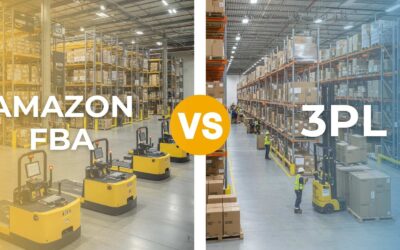

0 Comments